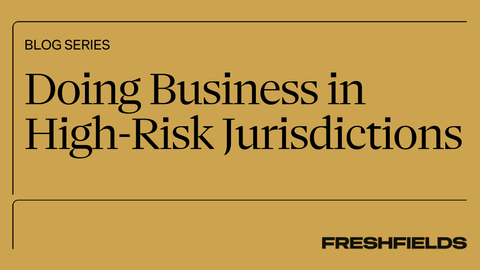On 13 December 2024, the European Forced Labour Regulation (EUFLR, the Regulation) entered into force. The EUFLR prohibits the import and export of goods produced with forced labour but does not formulate any specific corporate compliance duties. With the EUFLR, the EU now joins the ranks of the US and Mexico which both introduced legislation banning the import of products linked to forced labour some years ago.
Key facts
The Regulation generally applies to all economic operators (companies) regardless of size, legal form, industry sector, or the location of production both within and outside the EU. It prohibits products made with forced labour from being placed on or exported from the EU market (including online sales if they are targeted at end users in the EU). The prohibition of forced labour extends to any stage of the supply chain, including sourcing (such as raw material extraction), harvesting, production and manufacturing.
Unlike the EU Corporate Sustainability Due Diligence Directive (CSDDD), which directly imposes detailed internal risk and governance and business partner-related due diligence obligations on companies, the Regulation does not impose obligations to address forced labour risks in their supply chains. However, it complements the obligations imposed on companies inter alia by the CSDDD by preventing the sale of goods made with forced labour.
Enforcement of the Regulation will be coordinated by the European Commission which will lead investigations where the suspected forced labour is taking place outside the EU. In addition, Member States designate competent national authorities to monitor violations taking place in their territories. Any decisions taken by a competent authority must be recognised and enforced by competent authorities across all Member States.
As part of the assessment undertaken about whether a product is made with forced labour, the economic operator is obliged to respond to a request for information from the competent authority on their due diligence schemes/actions linked to the risks of forced labour within 30 working days.
When enforcing the EUFLR, competent authorities are free to prioritise their investigations using a risk-based approach. They should inter alia consider the operator’s size, economic resources, quantity of products placed or made available on the EU market, share of the relevant product in the final product, steps of the value chain closest to forced labour risks, and scale and severity of suspected forced labor.
Competent authorities are empowered to choose any or all of the following measures: (1) prohibit the placing and making available of products on the EU market and their export from the EU; (2) remove a product from the market, including online marketplaces; and (3) order that products shall be recycled, destroyed or donated. However, products may be allowed back onto the market after forced labour has been demonstrably eliminated from the supply chain.
Next steps with implementation and enforcement
The Regulation envisions a multi-layered approach involving collaboration at EU level, active engagement of Member States and cooperation with third countries. As a result, both the Commission and the Member States will be required to make adjustments, including:
- Member States will appoint national competent authorities by 14 December 2025 at the latest. It remains to be seen whether new authorities will be established or existing ones will fulfil these tasks.
- The Regulation establishes the new Union Network Against Forced Labour Products which serves as a platform for structured coordination and cooperation between the competent authorities and the Commission. In particular, the Network shall facilitate joint investigations, identify common priorities for enforcement activities, exchange information, expertise and best practices and contribute to the development of guidance.
- Within 18 months of its entry into force (i.e. 14 June 2026), the Commission will publish guidelines to assist companies in their due diligence efforts and provide best practices for terminating forced labour. At the same time, it will support competent authorities in implementing the Regulation.
- The Commission shall establish a database containing information on forced labour risks in specific geographic areas with respect to specific products or product groups by 14 June 2026.
- The Commission shall make available a single information submission point allowing any natural or legal person or association to submit information on possible violations.
- The Commission shall establish a web portal called Forced Labour Single Portal in order to put available information into the public domain on the competent authorities, the aforementioned guidelines, the database and the single information submission point. Furthermore, the Portal will publish any decision to ban a product including the withdrawal of a ban as well as the result of reviews.
- Member States will have to determine penalties applicable to economic operators for non-compliance with a decision of a competent authority. As always under EU law, penalties shall be effective, proportionate and dissuasive. Member States shall inform the Commission of the relevant national penalties by 14 December 2026.

Outlook for companies
The Regulation will become applicable from 14 December 2027. Alongside the CSDDD, the EU Deforestation Regulation and the EU Conflict Minerals Regulation, the EUFLR is a further example of the EU’s approach to strengthening supply chain laws. While the EUFLR does not specifically require companies to take compliance measures, it adds another binding legal instrument in the realm of human rights compliance. Though most companies will already be familiar with these new corporate obligations and have working human rights compliance systems, the enactment of the EUFLR stresses the importance of a new and broader look at corporate supply chain compliance.
For further insight on the Regulation, please also see our previous blog post.



/Passle/581a17a93d947604e43db2f0/MediaLibrary/Images/2025-10-21-10-30-43-502-68f760d3a94b3b874acc7f85.png)

